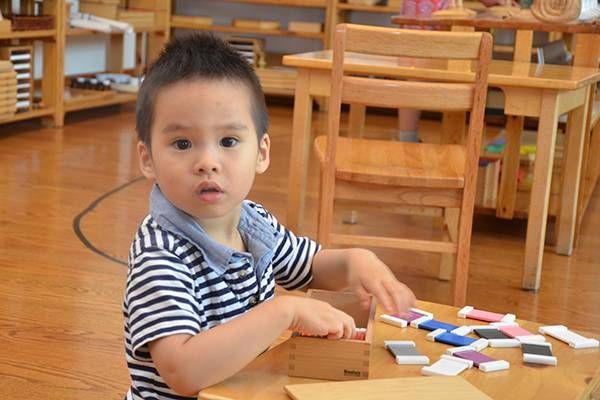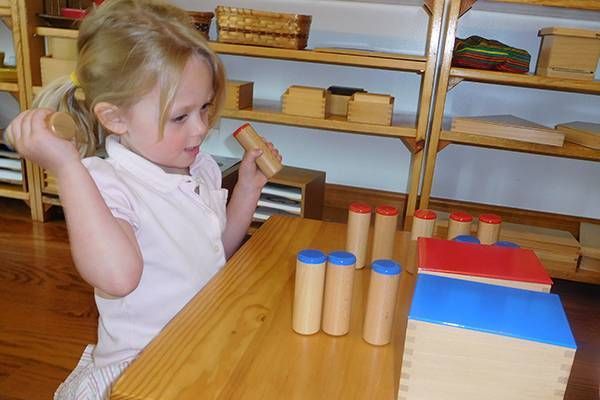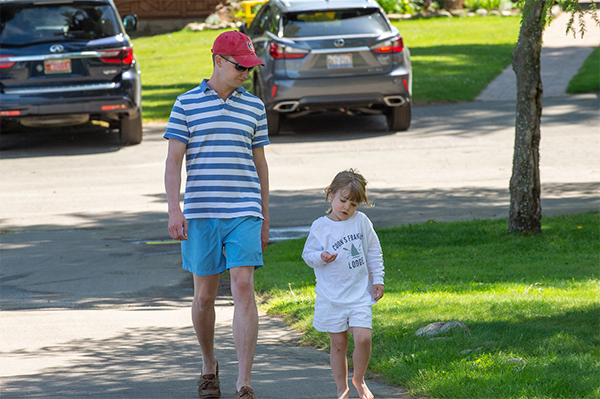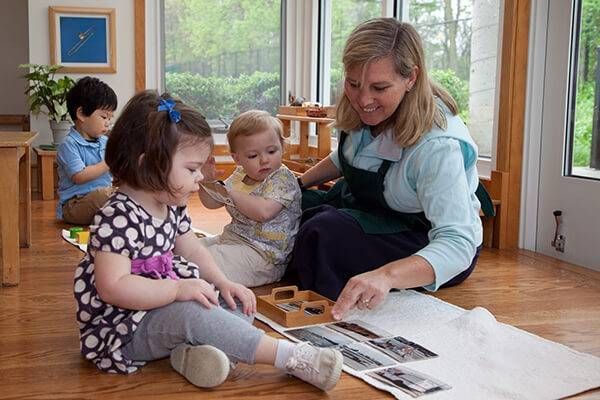Infants, Toddlers, YCC

Children love family celebrations! Whether you celebrate Diwalli, Rosh Hashanah, Eid, or Christmas, our traditions and rituals are important ways that we pause to celebrate life. They are times to gather with others, share food, reflect with candlelight, perhaps sing or listen to music, dance, and tune in to our emotions. I say this last part because holiday family traditions, whether they be spiritual or not, evoke feelings of peace, joy, sorrow, memories, or some kind of emotion that can serve as a connection with others, with nature, with our creator or be a chance to check in with oneself as an individual. Involving our children of all ages in our holiday family traditions--or creating them anew as a family--is an important way to help our children create a sense of connection with others and meaning in their lives. These are opportunities to connect our children to all that is good in humanity.

If you’ve been at a playground with young children, you’ve probably heard parents imploring their children: “You need to share!” At best, a child will hand over the toy, with a look of confusion or sadness on their face. At worst (and probably more frequently), they will cling even more tightly to the toy, resulting in a tantrum or a battle of the wills. These scenes play out on playgrounds, in sandboxes, and in homes across the world. It’s a natural and well-intentioned impulse on the part of the parents, who want their children to grow up with prosocial tendencies, and an ability to think about others and make friends. However, it is also a natural and well-intentioned impulse on the part of the child to hang on to their toys. Children don’t consciously have the same long-term goals as their parents, of course, but they are following a strong internal guide, which does ultimately want what’s best for them. A child under the age of six is “selfish” by necessity. In order to grow up to be an adult who is able to think about others and make friends, they must first go through this phase of development, where they will think almost entirely about themselves. Planes of Development Dr. Maria Montessori saw development as spanning four distinct planes: 0-6 years, 6-12, 12-18, and 18-24. Not until age 24 is a person’s brain fully developed. At this point they are considered a complete adult. Modern brain research supports Dr. Montessori’s observation, confirming that rapid brain development ends around age 25. For the purposes of this article, we will only delve deeply into this first plane—a young child, between the ages of 0 and 6 years. This is an inherently and essentially “selfish” plane. During this phase, children are entirely focused on becoming functioning people, who can walk, eat, communicate, and begin to think independently. Just imagine the tremendous changes that take place between a newborn and a six year old! A newborn can barely hold up their head and can only nourish themselves when their food source is placed right next to their mouth. A six-year-old can run, swim, bike, climb a tree, make themselves a sandwich, and tell you what happened last summer. The acquisitions that occur in the first plane of development are nothing short of miraculous. Their brains and being are focused on this extraordinary work. Given this perspective, the self-absorption of their work and understanding of the world is necessary and understandable. During these years, they aren’t meant to be thinking about others. They are meant to be employing their mental and physical efforts for their own development. The Montessori Classroom If you walk into a Montessori Young Children’s Community (for 1.5–3-year-olds) or Primary (for 3–6-year-olds), you will see how these individual needs are reflected in the classroom. The tables are designed for one child, the materials themselves are almost all designed for one child to use at a time, and most children will be working quietly and on their own. This is how they learn and develop. They need to be able to concentrate by themselves, and follow their own interests and impulses with the materials. They are not ready to incorporate other’s needs and desires into their work. Dr. Montessori observed that a child before the age of 6 is a distinct being from a child after the age of 6. A young child needs individual freedom to work and explore with activities, unencumbered from the opinions and agendas of their peers. After the age of 6, they become a much more social being. In the elementary classroom, you will notice that the tables seat four, and most materials are designed for groups of children. At this age, social activity motivates them to work. It is a very different plane from the younger child! Theory of Mind Modern research supports Dr. Montessori’s claim. Theory of Mind refers to a person’s ability to understand someone else’s perspective. This includes grasping something as concrete as another person’s visual field, as well as the abstractions of other people’s emotions, desires, and motivations. While Theory of Mind starts in the preschool years, the second order of Theory of Mind does not begin until after the age of 6, when children start to be able to predict what someone else is thinking or feeling, or will think or feel, given a certain set of circumstances. These are very sophisticated abilities! We do not need to worry or feel alarmed if our young children do not yet grasp their friend’s perspective. They are not hanging onto their toys because they do not want their friends to be happy. They are hanging on to their toys because they want to play, and they are developmentally unable to understand their friend’s point of view. This cannot be forced. Why Do We Care About Sharing? It can be tempting to think that we will teach our children to share by asking (or insisting). But perhaps the important question is - Why do I want my child to share? Is it because I want them to learn to think about others? Make friends? Be selfless? These are all important and useful values for a meaningful life, but taking a moment to consider where a young child is developmentally can help us to understand how to actually support them in their journey towards being a prosocial person with emotional intelligence and a selfless nature. A child who is resisting sharing isn’t resisting becoming a good adult. They are simply following the natural course of their development. These young years are a time for them to be thinking about their own needs. It is a necessity for them. In fact, demanding that they give away their toys while they are playing with them can have the unintended consequence of them becoming even more possessive with their things, or becoming apathetic, suppressing their positive natural urges for concentration and exploration. So What Do We Do? One way to verbalize a socially acceptable way of sharing resources is to state to your child, “You are having your turn. You may use it as long as you like. When you are finished, Amelia would like a turn.” Then inform Amelia, “You may have a turn when Teddy is finished. When it is your turn, you may use it for as long as you like.” This gives children words for how something might be shared between friends, giving them space to utilize the toy, and granting them both respect for their desires. And if a child continues to use the toy until the playtime is over, you can tell their friend, “Next time you will be able to use the toy.” There do not need to be any guarantees today. If a child is becoming emotional about wanting to use a toy, and fixating upon it, then try to distract them with something else. Sometimes this means that they need to physically move somewhere else. It is natural to feel that the most interesting toy is the toy that is in someone else’s hands! Removing your own emotional charge from the situation can help both children feel calm. The Caveats While we believe that a young child is rightly focused on their individual development, and should not be forced to share, it is extremely important to note that this does not mean that they are allowed free reign of any environment. In the classroom, we say that a child’s rights end where another child’s rights begin. This philosophy applies outside of the classroom, too. Children may not take someone else’s work. They may not disturb, distract, or destroy someone else’s work. They must abide by the routines of the day, and the expectations of their family and community - both for their safety, and for (a reasonable level of) peace and harmony. You are the adult. You are in charge. Other people’s emotions and thoughts matter. Protecting your child’s individual development does not mean they can trample on someone else’s. Final Thoughts At this age, not sharing is not a moral issue. It is developmental. Your child is following important and natural urges when they resist giving away their toys. Sharing is a point of arrival. Sharing means that a child feels safe and secure, and that they understand someone else’s perspective. It means they understand how someone else feels and why they want the toy. It means they are motivated to connect with others and want to build and maintain friendships. At best, forcing sharing too early only creates insecurity. At worst, it creates the expectation that you can demand that other people let you play with their toys. Children usually remember and imitate how you treat people more than they remember how you demanded that they treat others! The journey from “selfishness” to selflessness will not happen overnight. It will not happen in six years either. It is a journey that will take all of childhood and beyond. Keep this goal in mind and consider how you can support this value for your child: Patience, grace, and respect for where they are in their own journey.

What Do Children Do with Montessori’s Sensorial Materials? Imagine you are watching a four-year-old boy carry a wooden box with a red lid to a table. Then, he goes back to the shelf of Sensorial Materials and brings over a matching box—this one with a blue lid. (These are called the Sound Cylinders. Each is filled with about one ounce of grains of sand ranging from very fine to coarse, in subtle gradations so that each cylinder makes slightly different sounds when shaken). The boy removes each lid and slides them underneath each corresponding box. He carefully lifts eight wooden cylinders out of the boxes and lines them up in front of each box: the ones with blue tops in front of the blue-lidded box and the ones with reds tops in front of the red-lidded box. He mixes these identical red and blue topped cylinders around, and then lines them up again by color in two columns. He is now organized and ready to begin the game. He lifts a red-topped cylinder with his left hand and shakes it by his left ear. He then lifts the first blue-topped cylinder with his right hand and shakes it by his right ear; back and forth, he compares the sounds. He decides that they do not match, so he places the blue-topped cylinder in the back of the row of “blue cylinders” and moves on to the second blue-topped cylinder. He does this until he finds one that sounds the same and places this pair in a new column. He does this with all the cylinders until he has a double column of matching pairs. He checks them one more time, comparing carefully, his eyes soft as he focuses all his attention on the very faint sounds. When he determines he is correct, he mixes them up, deciding he wants to do it again. After the second time through, he puts the materials back on the shelf and moves on to another activity. This game introduces this young boy to a systematic way to compare qualities and keep the choices already tested in logical order. It gives him an option when he wants to compare other things in life and familiarizes him with an organized way to do math problems or eliminate options when looking for an answer to a “problem” of any kind. Equally important, it helps children to refine their sense of hearing and their capacity for concentration through an entire process. As a bonus, little children think such games are very fun! They love the challenge and the sensorial exploration. What Characteristics Identify Montessori’s Materials? There are certain qualities that Dr. Montessori’s Sensorial Materials share. They each isolate a sense or quality to bring the child’s attention to it. There is only one of each material to eliminate confusion. And by “…removing as far as possible all distracting factors…[this] enables the child to engage in an inner and external analysis that can help him to acquire an orderly mind” (Maria Montessori, The Discovery of The Child). Each sensorial material is: A materialized abstraction Progresses from general to specific From familiar to the unfamiliar Involves physical movement Isolates a difficulty Is limited in certain ways so that it draws in the child’s focus Serves as indirect preparation for something else (learning to read, write, or do arithmetic) Contains an inbuilt control of error Provides a key to the world Has a specified place in a sequence of presentations Arguably the most exciting thing about the Sensorial Materials are the games that the teacher teaches the children to play with them. There are matching games (where we connect two items with identical qualities), grading games (where we put objects or qualities in an order based on gradation of that quality), and language games (where we name, and sometimes label, qualities as we discover them). The games are very important because they help children exercise and further develop their memory-building capacities. When we build memorizing techniques in a game-like fashion, we get better at memorizing information and are better able to hold foundational facts in our minds. Here’s a surprise for you: Montessori children are not more intelligent; they’ve just received many more opportunities to develop their minds than children typically get in other educational settings. The games we play with the Sensorial Materials every day is one of the key ways this happens. What A Wonderful World! The knowledge the children gain through this specialized set of Montessori materials relates directly to their experience of the world around them. Children have a repertoire of categorized information at their fingertips and the language to identify and name their experiences in the world: “This is hot. This is cool. This is cold. This is tepid.” “This feels rough. This feels smooth.” “This is heavy. This one is heavier. This is long, that is longer, this other one is the longest.” “This is sour. This is sweet. This is bitter.” “That is loud. This is louder.” And even more specifically: “This is Poland. This is Mexico. This is Bhutan.” “This is the flag of Iraq.” “This is an obovate leaf. That one is hastate.” “This is a pentagon. That is a hexagon.” “That is lavender. This is fuchsia.” “This musical note is a C. This note is an F.”

Getting Away With It...Again “Jerry, it’s time to get out of the pool. Time to go now, please.” A father stands at the edge of a hotel pool in summer, clearly exhausted, as his wife walks past him carrying a crying baby girl, a floaty, a diaper bag, and two huge towels. “NO!” The boy in the pool, who looks to be about six years old, screams and makes an exaggerated pout, then disappears under the water before his father can say anything more. I feel terribly sorry for this father, and I swim away, relieved that I don’t have to be in his shoes. Raising children is relentlessly humbling work. Then a second thought comes to me: I can’t help but feel concerned for the little boy getting away with this kind of noncompliant behavior. From his confident air, I am guessing that this is a pattern in their family. In recent years, I’ve noticed that some children, of all ages, seem to be making decisions for their parents and directing their parents. Are children more rude than in the past? More difficult? I don’t think so. But I do think that many of today’s parents hesitate to take charge. Building Pro-Social Behavior The worrisome aspect of allowing children to run the show, in the long run, is that those children who practice pushing their parents around become increasingly unsure of their place in the world. They develop habits that do not ingratiate them to others. The very first cues children receive about social interactions, what is fair and respectful behavior, are those from their parents. These experiences from home set the stage for children’s interactions out in the world with others. Most often, young children who are habitually defiant are searching for boundaries that they desperately crave. The adults in their lives need to provide leadership. They can do so without hesitating or apologizing, but by being loving, fair, and confident. Parents must express confidence when they set the limit and say “No.” They can be sure that by removing a noncompliant child from a situation, they are giving necessary support. The goal at such times is much more far-reaching than the immediate situation at hand. Dr. Montessori wrote, “An individual is disciplined when he is the master of himself and when…he becomes accustomed to a discipline which is not limited to school but extends out into society.” Being able to master ourselves, with the self-control for cooperating with others, is something that adults help children to do over time, from their earliest years onward. What should the guidelines for behavior be? Montessori said, “A child’s liberty should have as its limit the interest of the group to which he belongs.” If the behavior is causing disruption to others—including to you as a parent—then address it promptly. Your aim is to teach your child how to become an integral part of a positive community.

Is it Work? As a parent, you may hear Montessori teachers describe your children’s activities as “work.” Your child may use the word, too, saying, “I love my work,” or, “I did a lot of work today!” But then you may wonder, “Why does my child go skipping in there every day?” and, “Why is my child dying to get back to school after the vacation, and sad when school is canceled?” How can “work” be so much fun? Quite simply, Maria Montessori discovered that working at something that interests them is playful for children, under the right conditions. It must be internally inspired with choice offered for freedom. Montessori found specific ways for children to meet their developmental characteristics and needs through purposeful activities. A kind of joy arises when children can fulfill their natural drive to form their personalities and improve their abilities. In other words, children love to play games that have internal purpose for them. Let's Play a Game!

